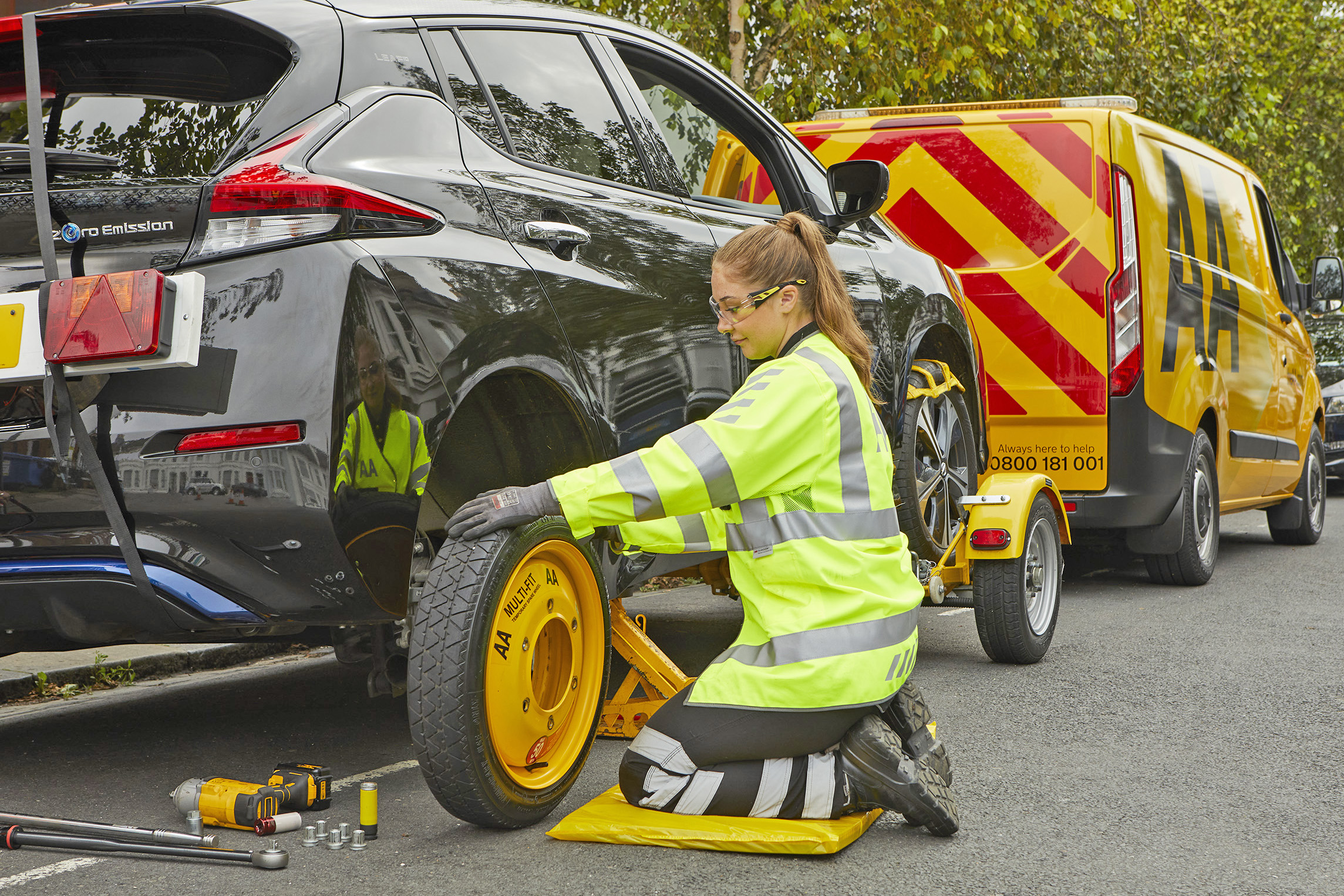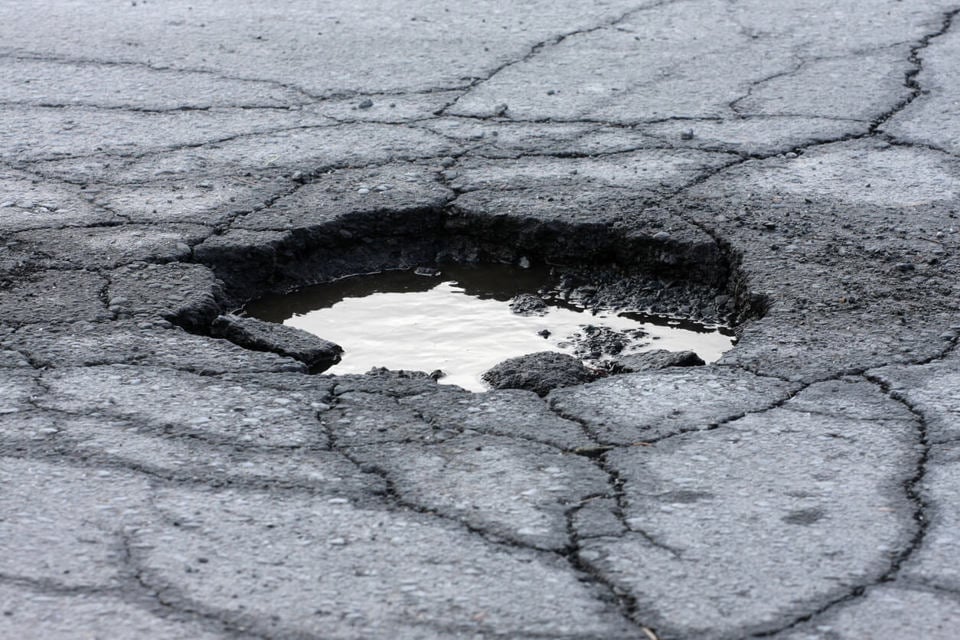The majority of local roads are 15 years from structural failure, with councils facing a shortfall of £16.3 billion to fix carriageways plagued by potholes.
The data, from the Annual Local Authority Road Maintenance (Alarm) survey report, also shows that less than half (47%) of roads in England and Wales are classed as being in good structural condition.
The remaining 53% – more than 107,000 miles – will not last beyond the end of the next decade.
Last November, the Government announced its ‘biggest ever’ road resurfacing programme, with £8.3bn redirected from HS2 to local highway authorities.
However, that was enough to resurface only around 5,000 miles over an 11-year funding period.
Based on survey responses from almost three quarters (72%) of local authorities in England and Wales, they say that they would have needed an additional £1.22bn – an average of £7.2 million per authority – in 2023/34, just to reach their own target road conditions.
Despite highways teams reporting an overall increase in carriageway maintenance budgets, they say they have also been hit by the impact of rising costs due to inflation, meaning they have been able to do less.
Together, with the increasing frequency of extreme weather events, the rate at which the network is deteriorating is accelerating, despite £143.5m being spent filling two million potholes over the past 12 months.
The survey report, published by the Asphalt Industry Alliance (AIA), suggests that roads are only resurfaced, on average, once every 80 years.
It also estimates that it would now cost £16.3bn to tackle the backlog of carriageway repairs and bring the network up to a standard from which it can be maintained efficiently and cost-effectively going forward. Last year, the AIA reported a repair bill of just over £14bn.
AIA chair, Rick Green, believes that there is a “mountain to climb” when it comes to improving the condition of local roads.
“While the transport secretary stated that this additional £8.3bn over 11 years is enough to resurface 5,000 miles of local roads, this equates to just 2.5% of the network – or less than 0.25% per year,” he said.
“Unfortunately, it will do little to address the scale of the issue with Alarm findings reporting that 11% of local roads are already in poor condition and likely to require maintenance in the next 12 months alone.”
However, Green acknowledged that English authorities would be in an even worse position without the additional funding from the Department for Transport (DfT).
“We sincerely hope that this promise is delivered on and that the Welsh Government honours its commitments to prioritising highway maintenance,” he added.
“We need to reach the point where local authority highway engineers are able to plan, and proactively carry out maintenance work in the most timely and efficient way, to the greatest benefit of all road users – rather than just having enough money to address immediate and urgent repairs.”
Sue Percy, chief executive of the Chartered Institution of Highways and Transportation (CIHT), says that, despite the efforts of central and local government, the local highway network is not in a good state and not up to the job of supporting the country’s ambitions for the future.
“Changing weather events are having a major impact on the effectiveness of transport networks,” she explained.
“We must develop a more resilient network through future proofing projects and maintenance activities. This will increase reliability for people’s travel and goods deliveries particularly as we face more extreme and varying climate events including flooding, high temperatures, severe weather and storms.”

Figures from the RAC and the AA show how fleets are facing costly repairs and downtime for tyre, wheel, steering, and suspension damaged by poor road surfaces.
RAC patrols attended nearly 30,000 pothole-related breakdowns over the course of 2023, up by a third on the previous year.
The equivalent of 80 breakdowns a day, it said that faults included broken suspension springs, damaged shock absorbers and distorted wheels.
The AA, meanwhile, estimates that pothole damage to vehicles cost a staggering £474m in 2023.
It says it dealt with 631,852 pothole-related incidents last year, the highest for five years and an increase of 16% on the previous year (543,000 incidents).
RAC head of policy, Simon Williams, says that Alarm’s findings send the clearest signal yet to the Government of the “critical state” of so many of the roads used by millions of drivers every day.
“With this report showing an estimated 107,000 miles of roads are fast reaching the end of their lives, the scale of the problem now facing councils is truly gargantuan,” he said.
“The fact Government data shows road maintenance is actually declining at a time when the precise opposite is needed, is even further evidence that councils don’t have the funding they need to look after these most important assets.
“The status quo is not sustainable. The longer the Government fails to grasp this reality, the bigger the eventual cost to the public purse.
“Only a commitment to introducing ring-fenced roads funding for councils will get them out of this dire mess. Without it, our roads will only get worse.”
To help highways authorities understand where the problems on their networks are, the RAC has partnered with technology company Metricell, which has developed a free mobile app that uses artificial intelligence (AI) to automatically identify road defects via smartphone cameras.
After downloading Stantheapp, users have to mount their phone safely in a cradle and set it to film the roads as they drive.
The results are fed into a national map on the RAC and Stan websites showing the health status of the UK’s roads as either red, amber, or green. The app can also be used to submit photos of potholes and other surface defects.




















Login to comment
Comments
No comments have been made yet.